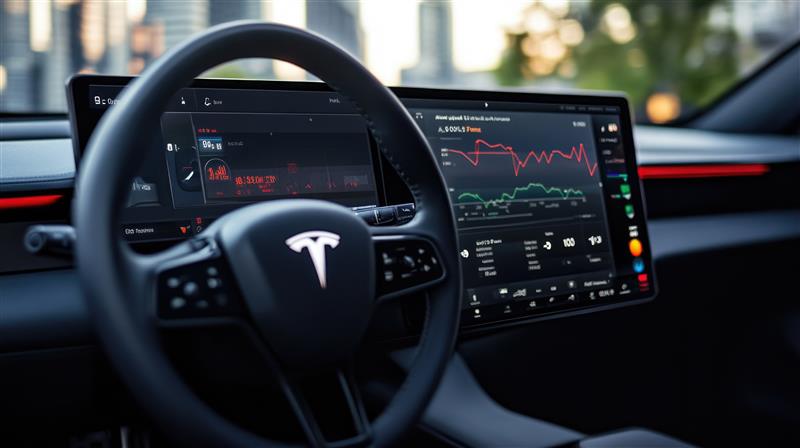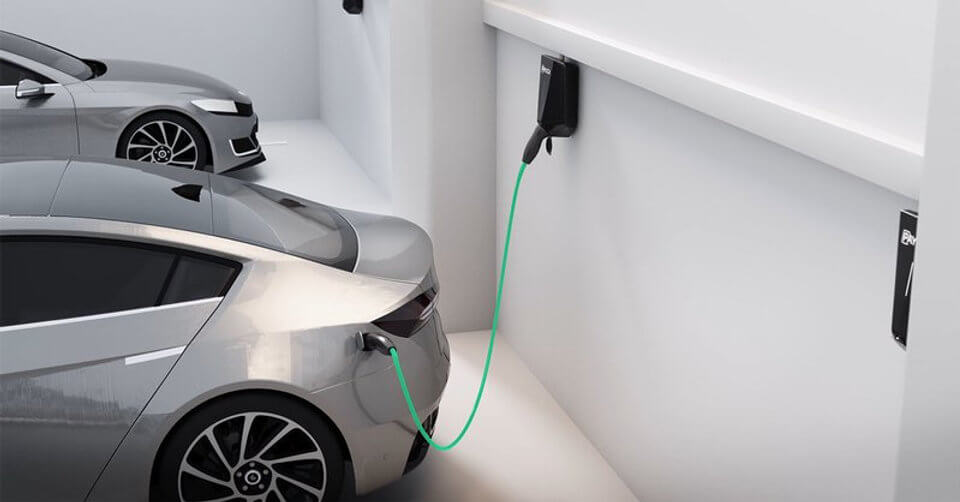The battery is the beating heart of every electric vehicle (EV). It powers motion, stores energy, and determines range, cost, and longevity. But batteries are also sensitive—affected by temperature, usage, and charging behavior. That’s where artificial intelligence (AI) steps in. In 2025, AI is playing a vital role in extending EV battery life, making electric cars more efficient, reliable, and sustainable.
This article explores how AI helps monitor, manage, and maximize EV batteries—ensuring longer life, fewer breakdowns, and better performance for drivers and fleets alike.
Introduction: Why EV Battery Life Matters
EV batteries are expensive to replace and crucial to vehicle performance. Their degradation affects:
- ⚡ Driving range
- 🔋 Charging frequency
- 💰 Resale value
- 🌱 Environmental impact
Extending battery life not only saves drivers money—it also reduces waste, mining demand, and the overall carbon footprint of electric mobility.
Common Causes of Battery Degradation in EVs
Understanding what wears out batteries helps explain why AI-driven management is essential.
| Degradation Factor | Impact on Battery Life |
|---|---|
| Fast Charging | Generates excess heat and stress on battery cells |
| Overheating | Accelerates chemical breakdown inside battery modules |
| Deep Discharge Cycles | Draining battery to near-zero shortens its usable lifespan |
| Cell Imbalance | Uneven aging among cells reduces total battery capacity |
Without smart management, these issues accumulate quickly. AI helps by identifying, predicting, and preventing such damage.
How AI Monitors EV Battery Health in Real-Time
Modern EVs come equipped with dozens of embedded sensors. AI systems collect data from these to:
- Track temperature, voltage, and current at the cell level
- Analyze charging patterns and driver behavior
- Identify anomalies before they cause performance loss
AI turns this raw data into actionable insights, alerting the system—or the driver—when battery health is at risk.
AI-Powered Battery Management Systems (BMS)
Traditional BMS regulates basic safety thresholds. AI-powered BMS goes further by learning and adapting over time.
Key Features:
- 🔄 Dynamic cell balancing: Ensures uniform aging across battery modules
- ❄️ Smart thermal regulation: Adapts cooling/heating based on usage, not just fixed thresholds
- ⚡ Charging control algorithms: Prevent overcharging and minimize voltage stress
These systems ensure smoother energy flow, lower peak stress, and extended lifecycle for EV batteries.
Smart Charging Algorithms with AI
AI optimizes charging by analyzing:
- Time of day and grid demand
- Battery state of charge (SoC)
- Historical wear patterns
- Ambient temperature and humidity
This allows for:
- Off-peak charging to reduce grid impact and costs
- Controlled power flow to prevent overheating
- Gradual top-up strategies to reduce stress on the battery
Some EVs even adjust charging curves in real time based on AI analysis, preserving battery health with every session.
AI for Range Prediction Accuracy
Battery performance varies depending on driving habits, terrain, temperature, and more. AI enhances range estimates by learning from:
- Individual driving behavior
- Navigation history and elevation data
- Traffic conditions and speed profiles
Unlike static range meters, AI-based systems offer adaptive, realistic estimates, helping drivers plan better and avoid overuse.
Thermal Management Optimization Using AI
Heat is the enemy of battery health. AI helps manage temperature through:
- Real-time airflow control
- Predictive cooling before high load events (e.g., hill climbs)
- Smart cabin conditioning to balance comfort and energy use
This protects batteries during both hot summers and cold winters, when improper thermal handling can rapidly degrade battery cells.
AI in Fast Charging Management
Fast charging can degrade batteries—unless AI steps in.
- ⚠️ Current throttling: Adjusts amperage flow based on battery heat and age
- ⛔ Session optimization: AI can end a charge before it becomes harmful
- 🔋 State-aware speed variation: Applies high-speed charging when safest
AI ensures that fast charging remains quick—but also safe and sustainable.
Predictive Maintenance with AI Analytics
AI tracks long-term battery usage to:
- Forecast capacity fade
- Flag potential cell faults
- Recommend service before failure
This reduces unexpected breakdowns and keeps EVs running at optimal performance for longer.
Machine Learning Models for Battery Life Extension
Machine learning (ML) models help EVs continuously learn and adapt based on historical and real-time data. Here’s how they contribute to battery longevity:
- 🔄 Supervised Learning: Models trained on large datasets predict degradation patterns and optimize usage accordingly.
- 🎯 Reinforcement Learning: AI agents adjust charging/discharging strategies by evaluating the long-term impact on battery health.
- 🔬 Anomaly Detection: Identifies unusual behavior—like sudden capacity drops or uneven heat zones—before they lead to damage.
By using ML, automakers can fine-tune energy consumption to maximize lifespan while minimizing performance trade-offs.
Battery Swapping and AI Coordination
Some companies, like NIO, are pioneering battery swapping—where depleted batteries are exchanged for fully charged ones in minutes. AI plays a central role by:
- ✅ Assessing incoming battery health in real time
- 📦 Matching vehicles with the most suitable batteries
- ⚙️ Optimizing station logistics to reduce wait times and energy waste
This ensures safe, efficient, and long-lasting use of shared battery infrastructure.
Integration with EV Ecosystems and Cloud Platforms
AI doesn’t operate in isolation—it’s part of a larger connected ecosystem. EVs today often integrate with:
- 🌐 Cloud-based platforms for fleet-wide analytics
- 🧠 Onboard edge computing for real-time decision-making
- 🔁 Over-the-air (OTA) updates for continuous AI improvement
This coordination enables energy-sharing systems, vehicle-to-grid (V2G) capabilities, and long-term AI learning across millions of users.
Case Studies: Tesla, NIO, and Rivian AI Battery Innovation
⚡ Tesla
- Uses AI to manage thermal behavior, adaptive regenerative braking, and smart charge scheduling.
- OTA updates regularly improve battery efficiency and range predictions.
🔄 NIO
- Leads in AI-coordinated battery swapping.
- Implements real-time cell diagnostics and usage history matching for shared battery packs.
🚙 Rivian
- Uses AI for terrain-aware range prediction and eco-mode adjustments based on driving habits and elevation changes.
Each brand uses AI uniquely, but all aim to extend battery life and improve user experience.
Limitations and Challenges in AI Battery Management
Despite its promise, AI battery management faces several hurdles:
- 🔐 Data privacy: Collecting and processing user data raises ethical concerns.
- 🤖 Model bias: AI must be trained on diverse data to avoid one-size-fits-all decisions.
- 🔌 Hardware dependency: Older EVs may lack sensors or computing power to support AI upgrades.
- 🧩 Standardization: Lack of cross-platform protocols makes integration with charging networks more complex.
Overcoming these challenges will be crucial for mainstream adoption and trust in AI-powered battery solutions.
Future Trends in AI and EV Battery Technology
Looking ahead, the fusion of AI and EV battery tech is set to deepen through:
- 🔋 Solid-State Batteries: AI will optimize their complex chemistry and performance windows.
- 🧠 Quantum AI: Faster, more efficient model training for massive sensor data streams.
- 🌍 Federated Learning: Training AI models across fleets without compromising individual data privacy.
These innovations will lead to smarter, safer, and longer-lasting EV batteries—pushing boundaries in both mobility and sustainability.
Conclusion
As electric vehicles become the standard, the role of AI in battery longevity will only grow in importance. From smart charging and thermal control to predictive maintenance and fleet optimization, AI offers real, measurable benefits that translate into longer battery life, lower costs, and reduced environmental impact.
In the race toward sustainability, AI isn’t just an advantage—it’s a necessity. The EVs of 2025 and beyond will be powered not just by electricity, but by intelligence that learns, adapts, and protects every charge.


